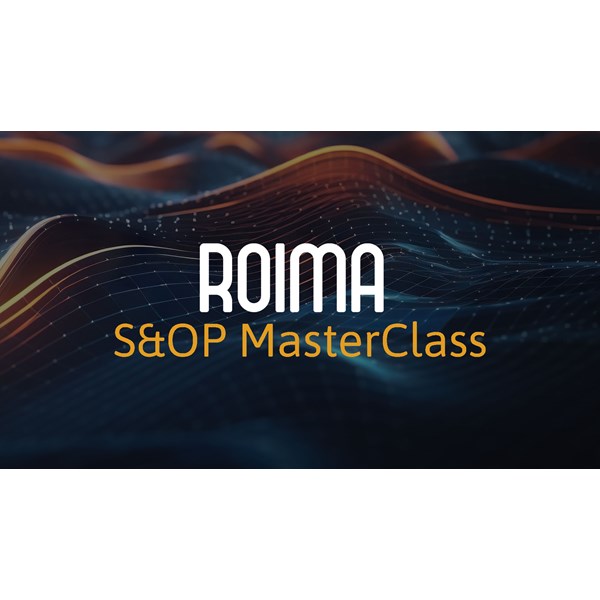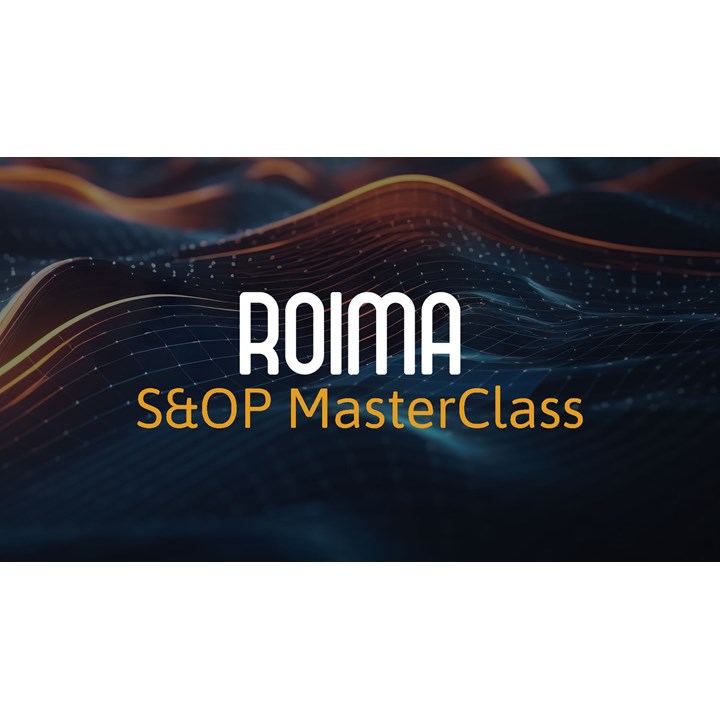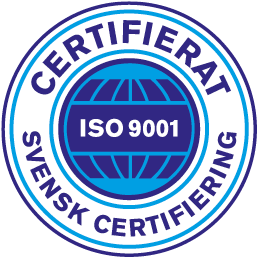S&OP MasterClass™
Sustainability Will Hit Supply Chain Planning Like a Train (Soon)
Welcome to this S&OP MasterClass.
These MasterClasses have the purpose of diving into Integrated Business Planning and Supply Chain Planning in general, hopefully giving you some good inputs on the way.
894043479
On this S&OP MasterClass™, we focus on crucial topics like sustainability and supply chain planning. We address the following concerns.
- Why should supply chain professionals care about sustainability?
- Why are many supply chains not ready for sustainability initiatives, and what can CSCOs do about it?
- How do you take on the challenge of understanding and operationalizing scopes 1, 2, and 3 emissions?
And much more!
Benjamin Obling will discuss these complex topics and strategies to achieve your sustainability goals. Your host is is Søren Hammer Pedersen
In This Episode
Listed below are the most essential timestamps from the podcast episode to make it easier for you to find the topics that interest you.
01:21 Who is Benjamin Obling?
02:40 What is sustainability and supply chain planning?
03:44 How far have companies come?
06:12 Will sustainable supply chain planning become a business driver?
10:11 How important is sustainability to medium enterprises today?
11:46 Why hasn’t the pressure for sustainability initiatives dribbled down to supply chain planning yet?
13:37 How can sustainability be made operational in a supply chain planning setting?
14:50 Where to begin?
Full Episode Transcription
Søren Hammer Pedersen (00:08):
Hello everybody. Warm welcome to this S&OP MasterClass from Perito Consulting around the topic of sustainability and Supply chain planning. Just to set the scene here, the purpose of these S&OP MasterClasses is to take some of the trending topics within supply chain planning and give our perspective on these topics, how will they affect supply chain planning, and hopefully give you some tips and tricks on how you can use these topics within your own organization in your company.
(00:40):
Today’s topic is a very exciting one. Of course, we are taking one of the very trending topics at the moment, namely sustainability, but we are also taking it into a context of this supply chain planning. And our very bold statement here today is that actually this sustainability is going to hit the supply chain planning like a train very soon. And they might not and we might not be quite ready for it yet. So we are going to give our perspective on this here today. First of all, I’m not alone in the studio, so you’re not left just with me. I brought my very good colleague, Benjamin Obling and maybe Benjamin you could start by just giving a few words to the listeners on your experience.
Benjamin Obling (01:21):
Yes, hello and hi, Søren. Thanks for having me here. My name’s Benjamin, as you said. I’m a co-founder of Perito working with the Integrated Business Planning solutions that we provide. So both the implementation of the solutions and also the development of our platform within Integrated Business Planning, and now sustainability solutions as well.
Søren Hammer Pedersen (01:41):
Exciting. Thank you and great to have you here. I think it’s one of the topics I have looked most forward to in these S&OP MasterClasses. And three things I would like to cover here today. I think that was very interesting listener. First of all, what is the state at the moment? Where are we in terms of sustainability, both in the society but also in the planning? Why is it of course that we think that maybe supply chain planning is not quite ready for what’s going to hit them very soon? And of course the obvious one, what are we doing about it? So three main topic is here today and for maybe also for you in the listeners, we are going to take this as a topic on the next podcasts as well here in Perito Consulting. Diving more into these many of the things we’re going to mention today. So be sure to check those out along the way as well. But let’s set the scene first. Just pure definition here. Benjamin, to start off with, what do we mean when we say sustainability and supply chain planningW?
Benjamin Obling (02:44):
Yeah, so what we are focusing on here, the CO2 emissions part, you could say sustainability is in general the broad term here, but we are zooming in on the emissions part. So how do we reduce the CO2 emissions and eventually go to zero emission or that being the goal of many, many countries and companies. Yeah.
Søren Hammer Pedersen (03:08):
Okay. And of course taking it into a planning context because when we talk… So there’s many also on a society perspective, there’s many other topics we could have brought in human rights and other things that comes into the equation. But we’re focusing mainly on the CO2 and the planning here today. Yes.
Benjamin Obling (03:25):
Yeah. And you can say the reason also why it makes sense coming from this supply chain planning part is of course the supply chain is a huge part of the CO2 emissions in the company. So looking at the CO2 emissions, looking at the company’s supply chain will be the main contributor in most companies of the CO2.
Søren Hammer Pedersen (03:44):
Yeah, okay. But from my perspective here, this is not a new topic. If you look back, we have been talking about the sustainability in society and in companies for a long time. So maybe we could start when by saying, okay, setting the scene, the trim of where are we at the moment in the different industries in the companies towards this sustainability and working with it. How far have we come so far in your perspective?
Benjamin Obling (04:12):
So a lot of the work that’s been done has been voluntary. So you could say that that will be the front runners in the company. So normally if you take the hard profit maximization glasses on, it would be the companies who have the most benefit from being CO2 neutrals or zero CO2 emission companies. So that would be the ones who have B2 C2B so they have normally consumer contact, so it makes sense for them to be low at low emissions where it would have the B2B companies being a bit more reluctant, a bit further behind.
(04:43):
But you could say it’s been voluntarily going into more regulatory paradigm here because we have regulations coming from you, coming from others. So there is a hardcore law regulation part of it, but there is also certainly an increasing focus from the different stakeholders. So even you if you’re a B2B company, the customers or the consumers of your customers, so you could say next level, they will also demand that they know what is the CO2 emissions from your goods that you sell to the company that sells it to the end customer so looking at the full chain, you could say from different directions we see increasing pressure.
Søren Hammer Pedersen (05:22):
Yeah. So I guess also what you’re saying is that even if a company wanted to avoid this, it’s not going to be an option because even though the legislation is not that firm yet, we have some of course reporting requirements in certain sides of company and things like that. But take two, three, four years down the road, then it would be have increased also legislation around these and the demands on the company, I guess.
Benjamin Obling (05:49):
Yeah. It will certainly be moving from the marketing departments. You could say now it’s into more like the hobby project with the front runners, the ones who want to do good in the world, you could say the CEOs and companies or owners and then moving into something we need to do because we have the legislation or we have the stakeholders giving us enough pressure to make sure that we need to do it. Yeah.
Søren Hammer Pedersen (06:12):
Do you also see some changes in terms of how competitive a company will be in the future towards these topics? Will it be demanded to companies to actually deliver on these points and not just low prices and good service levels and things like that?
Benjamin Obling (06:29):
I think this is going to be a license to operate thing. You need to have a certain level of sustainability in your supply chain. Otherwise, the customers or the customers, customers or other stakeholders will basically not allow you or you’ll not be invited in so it’s going to be a check mark. You need to be able to check when you sign a contract with a client, with a customer.
Søren Hammer Pedersen (06:53):
Yeah. Okay. Yeah, I think it correlates very well. I saw a very interesting survey from Gartner a couple of weeks back where they have the CEO hot topic list and you could really see also there that the sustainability was moving up the list now of course you can always doubt a bit if that’s enough. They know they have to say that we have to focus on sustainability, but I can still be a bit doubtful how much has gone into actual practice yet. Yeah.
Benjamin Obling (07:24):
It’s certainly not like if we look at the supply chain practice or you look at accounting, et cetera, we are obviously way behind here. So this is a area that is going to accelerate and is accelerating over the current and next years.
Søren Hammer Pedersen (07:38):
So to sum up, you have no choice. You have to focus on this. And of course that leads beautifully into the statement that we have talked about up to today, that supply chain is not ready for what’s going to hit them very soon. So maybe you could elaborate a little bit on that. Where are the companies now and how do you see this in two years time? What are they missing when we say that we don’t think they’re actually ready for what’s coming?
Benjamin Obling (08:10):
Yeah. Start by saying what should they know? They should know all of their emissions. So what we call scope one, two, three. So the direct, the indirect director, not everything you purchase and can get back to the definitions a bit, but you could say they should have a full picture of the total emissions in order to be able to simulate and project, how can they change it and where will they end of the year, next year, et cetera. And in order to do that, they need a completed detailed picture of their total footprint.
(08:38):
Almost no companies have that detailed footprint. I would argue at this point in time. Some have scope one, so that’s the direct emission. So how much diesel do you purchase? That’s very easy. Then you can change, you can calculate how much CO2 and so on. Some have the power, the electricity, they know that. Then they can look at up, okay, how much do we have emissions based on that. But what about all the goods you purchase? What about the scope three? The difficult part, not a lot of companies have that or have that in a very broad picture. So they have a total chop down say, “Okay, it’s completely on transportation. It’s like x tonnage. But you can’t operationalize that and that’s where most companies are at the moment.
Søren Hammer Pedersen (09:20):
Yeah. Okay. So basically what you’re saying is that we have some idea maybe we set some targets. Probably a lot of companies, a bit bold said, have made the pretty PowerPoints as well, explaining what their ambitions are, what their strategy are. But it hasn’t dribbled down in yet to operation.
Benjamin Obling (09:43):
When you look at the home pages of companies, they would certainly have something and they have targets as you say obviously. But the next step is really how do we operationalize it? How do we simulate, how do we make the initiatives in order to impact the total emissions? That’s the next step. And that’s the tricky part. You can have some low-hanging fruits saying, “Okay, we are flying a lot of goods, we should go by sea instead.” So those are more easy, be harder and harder as long as the more that we reduce the emissions.
Søren Hammer Pedersen (10:11):
But do you think the chief supply chain officers, are they feeling the pressure yet or is it still back of their minds that they need to do something here? I know if you go into webinars with Gartner and all that, you can find huge companies, they have to, but the standard enterprise companies, are they feeling the pressure or are they still being measured on inventory levels and supply chain performance? And only that…
Benjamin Obling (10:39):
I would say most CEOs that I talk with, it’s certainly on the agenda. When you mention sustainability, then you certainly see in their eyes, “Okay, that’s something we need to do at some point, but right now have a problem with the goods from China that we need to and so on.” So it is of course the hardcore targets that we’ve used to be so days inventory outstanding, et cetera. What is the customer service levels, all of that. But this is certainly coming and they know that it’s coming and starting to prepare a bit, but with varying success of-
Søren Hammer Pedersen (11:13):
With very interest. So we don’t see a lot of specific supply chain targets yet. It’s more still on the supply chain performance in terms of the-
Benjamin Obling (11:24):
Yeah. And then we have the supply chain of the sustainability officer. If you have such a personal or sustainability, say, person that’s focused on that, trying to put it in as targets, trying to make it operational, trying to get the yes of the COOs.
Søren Hammer Pedersen (11:46):
And maybe a broad question, but why hasn’t it dribbled down more yet? Is it a cultural thing? We’re used to talking about prices and things like that as and service performance and things like that. It’s just a cultural thing that it hasn’t drive in that or it’s a massive barriers that we don’t see.
Benjamin Obling (12:06):
Say the one part is of course saying, “Okay, now we need to reduce the CO2 emissions.” But what it actually does, it changes completely the way we need to look at the business because we’ve been teach from top from business schools that we need to profit maximize. So we need to maximize the shareholder value. That’s our only purpose. And then slowly, okay, we need to be nice to our employees and so on, and we need to do good in or at least to not do too bad in the world, polluting a lot. And now we actually have a completely different dimension that we need to optimize together with the profit.
(12:38):
So how do we balance the profit together with how do we balance the profit together with this CO2 emissions? And that’s because we need to of course, continue to profit maximize because otherwise we’ll go out of business and there won’t be have any emissions. But then there will be the competitor of does all the emissions. So we need then to put up the profitability together with the CO2 and then make sure that we do the CO2 reductions where it harms our profit the least so that we make the most profits still, but polluting less.
Søren Hammer Pedersen (13:11):
So actually using many of the same mechanisms but still taking in a different parameter. It’s still an optimization where it’s not only do good and you waste a lot. I use a lot of money on that. It’s still the optimization part we need to focus on here.
Benjamin Obling (13:26):
The tricky part is now we have two maximization targets and that makes it slightly more difficult if you can remember from business schools when you have multiple and it becomes more tricky.
Søren Hammer Pedersen (13:37):
Yes. Okay. But last thing before, of course, we also have to give our listeners how do we actually work with this then? But I think two very interesting points you brought on here that I think it’s going to be one of the driving forces in my perspective anyway from the transformation here is clients and employees. Because that’s where the real press, of course, that’s legislation, but I think that’s where the real pressure’s coming from and the one we didn’t touch so much on is the employees. And I think actually think that’s something people forget both in recruiting the right talent, but also what kind of company and what kind of company culture you have will be a big part of this transformation that if we are to succeed with it, I guess.
Benjamin Obling (14:23):
Absolutely. Absolutely. I believe more and more I’m asking the question or demanding that they have one thing is purpose in the work that they do, but a part of the purposes that the company you work for is not polluting the world that will give on to our next generations. So it’s one part is the license to operate. That’s sort of the minimum you need to do something. And then from there on, the more you do, the better employees you can, more challenge you can recruit.
Søren Hammer Pedersen (14:50):
So the train is coming and there’s no stopping it. So the interesting part is of course, if you sitting out there, you’re working with supply chain planning, maybe you’re a chief supply chain office, where do you start? Of course, I know it’s going to be a bit simple statement here, but what kind of steps do you think you need to go through to be able to start working with this on a more operational level?
Benjamin Obling (15:22):
Yeah, so first step is to get the transparency. We call it deep transparency. And the reason we do that is that some companies already have scope one, scope two measures, but in very, very aggregated forms. So say, “Okay, I have an emission of X tonnageish of CO2 within transportation in total.” But that’s not operational. You need to know from where’s that coming. So is that you need to know all the way down to which products are we talking about? Which customers is it going to, which routes is it? It’s going from China to Amsterdam or Shanghai, Amsterdam.
(15:58):
What are the routes? What are the mean of transportation, for example? Or what is the processing activity in the production where we’re using this amount of electricity? Because only when you have that type of detailed transparency in scope one, two, and three, then you can start to a bracelet line and then you can start to have the initiatives of saying, okay, now I know where it is.
(16:19):
Not just in broad term saying, “Okay, my total diesel emission, that’s the big part. Yeah, okay, but what is using the diesel force, or how can we change it?” You need to know that that’s the deep transparency and step one. Then step two is the simulations and projections. So basically saying what happens if I change the route, if I change everything I get from this factory in China to going from air to sea, for example. Okay, what does that give me? So those are initiatives based on simulation. So you need to be able to simulate based on the transparency you have.
(16:53):
Then when you have settled on the initiatives, you can project it. So will I reach the target end of the year, end of next year, et cetera. So it becomes operational targets that you have based on the initiatives and your baseline. And then at the end you need to monitor this on a continuous basis. And again, not just the total, because you could see the total is actually going up, but you might actually be succeeding in the different initiatives, but your total revenue went up, so then it’s okay that your emissions went up or emissions stayed at, sir, you actually did a good job anyway. So that’s where we see the deep transparency, the simulations and projections and then the continuous monitoring.
Søren Hammer Pedersen (17:28):
Yeah. Okay.
Benjamin Obling (17:30):
Easier said than done, but still what you need to do.
Søren Hammer Pedersen (17:32):
Yeah, yeah, yeah. I hear what you’re saying. It’s very easy to set up three steps to do them. And of course that’s also what our listeners will be a crime, because I think many of them, they know that they have to do something on the transparency. They know they have to measure scope one, two, and three. But how to do that in a data-driven way is a very interesting topic. We will dive into this in the next podcast, but I think the main point from this step is that we really have to work with how to make it operational. It’s not enough to have these high level project.
(18:15):
And I think if you look at many of the projects going on at the moment, they are quite high level making very, very broad assumptions and just getting up with a total of trend or to volumes around things, and also maybe dribbling down to business uniting and civic targeting. But I think it in many cases, stop there. I think the operational part is crucial here. If you actually is going to be succeed and be a winner in this market or this future that’s coming.
Benjamin Obling (18:45):
Yeah, absolutely. And then you also could say here, you need to do it in scope one, two, and three as another part we discussed because some companies aren’t doing it at scope one and two as you said, but on aggregated level. And that actually makes it pretty easy to reduce the CO2 emissions because if you take one example saying now we are doing transportation internally, so we have our own trucks, that would be scope an emission.
(19:09):
You have the diesel going out, so what you just need to do is to outsource your transportation. Then it would be scope three. It would fall out of your measurement. Your measurement would go down, your tremendous success. What you’ve done is just you have sold all the trucks to a transportation company, you haven’t done anything good in the world. So you need to do it end to end, all of its scope one to three. So also think that scope one to three is the baby steps we’re taking. Now, the classification of one to three is actually something that will disappear in the future. I think because it’s not relevant, you need to do all, otherwise it doesn’t make sense.
Søren Hammer Pedersen (19:44):
So important the topic and very exciting. I think we are running out of time here for this, the first thing, but I think what we should do and what we will do is dive into these steps in the next podcast. How would you do this deep transparency? How would you actually do a data driven assessment of scope one, two, and three? I think that’s a very interesting talk. And of course, how do you get into the holy grail of this, the operational part, how would you actually do it? What is the building blocks you need there to get started with that? Those will be the next topic.
Benjamin Obling (20:18):
Yeah, absolutely. And just putting one last comment on the train picture that created, which I think is perfect, but it’s also a bit scary, right? We have a train coming, but it’s a good thing the train needs to come. That’s the other part, we just need to make sure we have the transparency and the simulation capabilities so we can balance the train, the CO2 emission reductions with the profitability so we stay profitable, but do it in a sustainable way.
Søren Hammer Pedersen (20:42):
Yeah, exactly. If you don’t get on the train, you’ll be stuck at the station and you don’t want that. Thank you, Benjamin, for this. We will talk much more on the next topics here and of course, thank you also to you out there listening to us. Please dive into the next podcast as well in this series around sustainability and supply chain planning. Very interesting topics coming up. And of course, as always, if you have questions, inquiries anything, reach to us out to us in Perito Consulting. You can find us on our website and on the social media. We will more be happy to talk to you also about these topics. Thank you.














